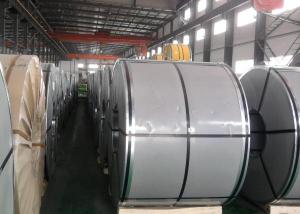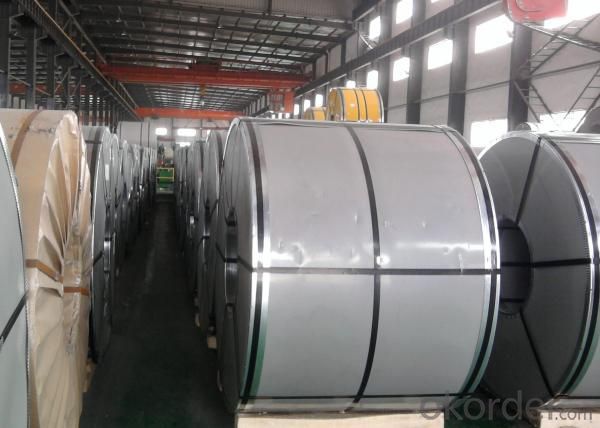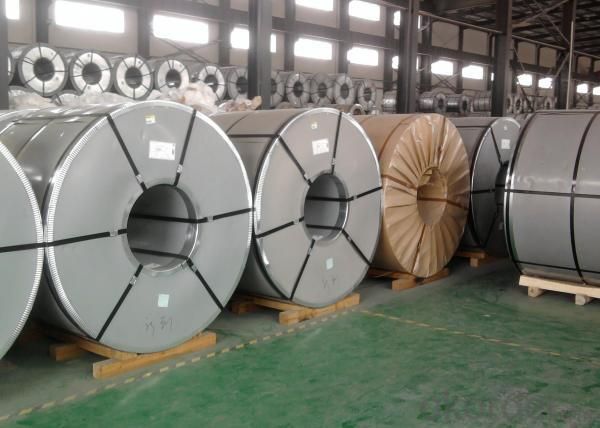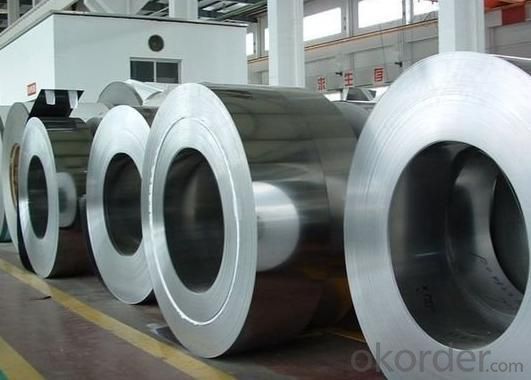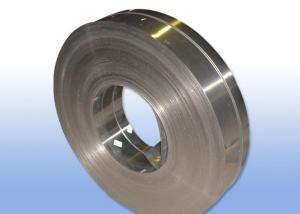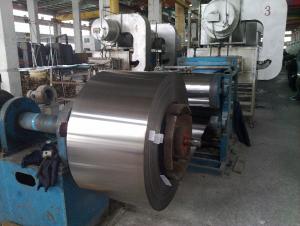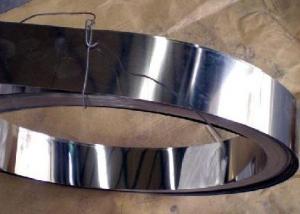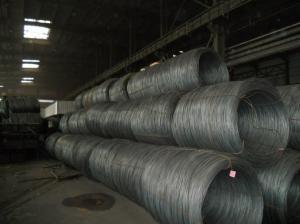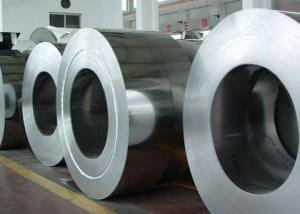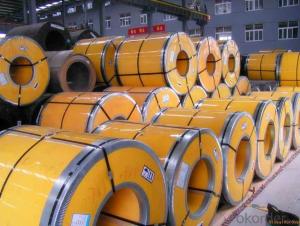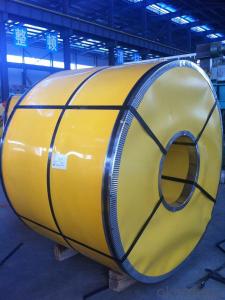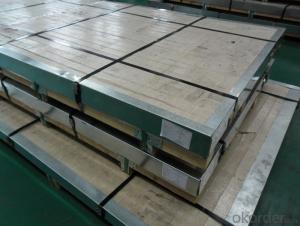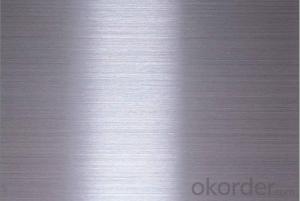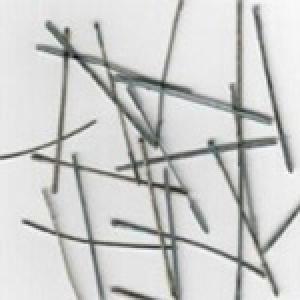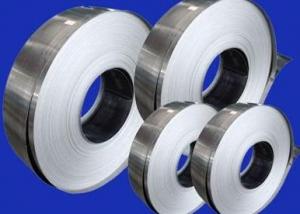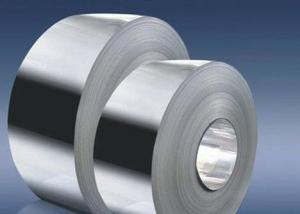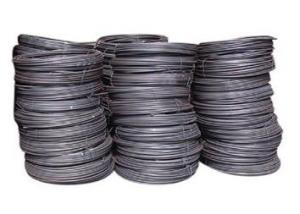304 2B Stainless Steel Strips
- Loading Port:
- China Main Port
- Payment Terms:
- TT or LC
- Min Order Qty:
- 1 Ton m.t.
- Supply Capability:
- 2000 Tons Per Month m.t./month
OKorder Service Pledge
OKorder Financial Service
You Might Also Like
304 2B Stainless Steel Strips
1. Chemical composition
|
C |
Si |
Mn |
P |
S |
Ni |
Cr |
|
max0.08 |
max1.00 |
max2.00 |
max0.045 |
max0.03 |
8.00-10.50 |
18.00-20.00 |
2. Mechanical properties
|
Yield Strength |
Tensile |
Elongation |
Hardness (HV) |
Hardness (HRB) |
|
≥ 205 |
≥ 520 |
≥ 40 |
≤ 200 |
≤ 90 |
3. Standard: AISI, ASTM, GB, EN, DIN, JIS
4. Surface: 2B, NO.1, BA, NO.4, Hairline, SB, Mirror finish, Anti-skid, Cherkered etc.
5. Size: Thickness: 0.3-3mm (cold rolled), 3-40mm (hot rolled)
Width: 18-600mm
Length: As customers' request.
6. MOQ: 1 Ton
7. Payment terms: T/T or L/C
8. Packing: Seaworthy package with wooden or Iron pallets with the paper and the steel strip, or as customers' request.
9. Delivery time: Usually about 7 days after we confirming the order, or according to your quantity.
If you have any demand, pls feel free to contact me.
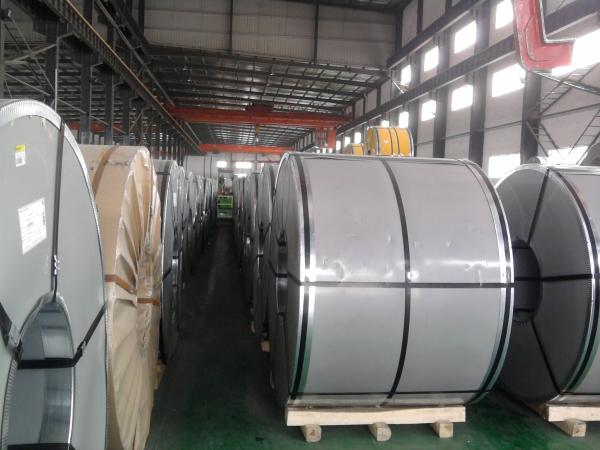

- Q: What is the conductivity of stainless steel wire?
- The conductivity of stainless steel wire varies depending on the specific grade of stainless steel and its composition. Generally, stainless steel is not as conductive as other metals like copper or aluminum. It has a lower electrical conductivity, which means it does not allow electricity to flow as easily. However, stainless steel wire can still conduct electricity to some extent, especially in comparison to insulating materials. The conductivity of stainless steel wire can be influenced by factors such as the temperature, thickness, and surface condition of the wire.
- Q: What are the different types of stainless steel wire brushes for cleaning?
- There are several different types of stainless steel wire brushes that are specifically designed for cleaning various surfaces and removing different types of debris. Some common types include: 1. Hand brushes: These are small brushes with stainless steel wire bristles that are attached to a handle. They are typically used for small cleaning tasks, such as cleaning grills or removing rust from metal surfaces. 2. Wheel brushes: These brushes have a circular shape and are mounted on a power tool, such as a drill or angle grinder. They are commonly used for heavy-duty cleaning tasks, such as removing paint or rust from large metal surfaces. 3. Cup brushes: These brushes have a cup-shaped design with stainless steel wire bristles arranged in a circular pattern. They are typically used for cleaning rounded or irregular surfaces, such as pipes or curved metal objects. 4. Scratch brushes: These brushes have a small, narrow shape with stainless steel wire bristles that are tightly packed together. They are primarily used for precision cleaning tasks, such as removing dirt or grime from hard-to-reach areas or intricate parts. 5. Knot brushes: These brushes have stainless steel wire bristles that are twisted or knotted together. They are commonly used for heavy-duty cleaning tasks, such as removing weld scale or heavy rust from metal surfaces. It is important to choose the right type of stainless steel wire brush for your specific cleaning needs to ensure effective and safe cleaning results.
- Q: Can stainless steel wire baskets be used for food storage?
- Yes, stainless steel wire baskets can be used for food storage. Stainless steel is known for its durability, corrosion resistance, and non-reactive properties, making it a safe and hygienic material for storing food. Stainless steel wire baskets are often used in commercial kitchens, food processing facilities, and even in home kitchens for storing fruits, vegetables, bread, and other food items. The wire construction allows for proper air circulation, preventing moisture buildup and helping to keep the food fresh for longer periods of time. Additionally, stainless steel is easy to clean and maintain, making it a practical choice for food storage.
- Q: Can stainless steel wire be used for HVAC systems?
- Yes, stainless steel wire can be used for HVAC systems. Stainless steel wire is commonly used in HVAC systems for various applications, such as supporting ductwork, hanging equipment, and securing insulation. Its corrosion resistance and strength make it ideal for withstanding the harsh conditions and high temperatures often found in HVAC systems.
- Q: What is stainless steel wire made of?
- Stainless steel wire is made predominantly of iron, with the addition of chromium, nickel, and other alloying elements. The exact composition of stainless steel wire can vary depending on the specific grade and intended application. The addition of chromium gives stainless steel wire its corrosion-resistant properties, as it forms a thin protective layer on the surface that prevents rusting. Nickel is often added to enhance the strength and ductility of the wire. Other alloying elements such as molybdenum, titanium, and copper may be included to further enhance specific properties like resistance to high temperatures or improved weldability. Overall, stainless steel wire is a versatile and durable material that is widely used in various industries for its excellent mechanical and corrosion resistance properties.
- Q: Can stainless steel wire be used for wire bonding?
- Yes, stainless steel wire can be used for wire bonding. Stainless steel wire has excellent mechanical properties, including high strength, durability, and corrosion resistance, which makes it suitable for a variety of applications, including wire bonding. Wire bonding is a process used to interconnect semiconductor devices, typically between a chip and a package, or between different components within a chip. Stainless steel wire is commonly used in wire bonding for its ability to provide reliable electrical connections, even in harsh environments. Additionally, stainless steel wire offers good thermal and electrical conductivity, ensuring efficient signal transmission. However, it is important to note that the specific type and grade of stainless steel wire used for wire bonding may vary depending on the requirements of the application.
- Q: What are the different types of stainless steel wire ropes used in mining?
- There are various types of stainless steel wire ropes used in mining, including 6x19 IWRC (Independent Wire Rope Core), 6x26 IWRC, and 8x19 Class Seale construction. These wire ropes are specifically designed to withstand the harsh conditions and heavy loads often encountered in mining operations.
- Q: Can stainless steel wire be used for welding electrodes?
- Yes, stainless steel wire can be used for welding electrodes. It is commonly used in applications that require corrosion resistance and high strength, such as in the welding of stainless steel materials.
- Q: Is stainless steel wire resistant to chloride corrosion?
- Yes, stainless steel wire is generally resistant to chloride corrosion. This is because stainless steel contains a high percentage of chromium, which forms a protective oxide layer on its surface. This oxide layer acts as a barrier, preventing the penetration of chloride ions that can cause corrosion. However, the level of resistance can vary depending on the specific grade of stainless steel used. Some grades, such as 304 and 316, offer excellent resistance to chloride corrosion and are commonly used in marine environments. On the other hand, lower grades of stainless steel may be more susceptible to chloride corrosion. Therefore, it is important to choose the appropriate grade of stainless steel wire based on the specific application and environment to ensure optimal resistance to chloride corrosion.
- Q: What are the different types of stainless steel wire hangers?
- A variety of stainless steel wire hangers can be found to cater to specific purposes and applications. 1. The most commonly used type is the standard wire hanger, which is ideal for hanging clothes in closets. It features a simple design with a single wire loop for hanging the garment and a hook for placement on a rod. 2. For heavier garments like coats, suits, or jackets, heavy-duty wire hangers are recommended. They are made from thicker stainless steel wire, providing extra strength and durability. 3. Non-slip wire hangers are designed with a special coating or rubberized material on the surface to prevent garments from slipping off. They are particularly useful for hanging delicate or silky fabrics that tend to slide off regular hangers. 4. Space-saving wire hangers are designed to optimize closet space by allowing garments to be hung in a compact manner. They often have a slim or ultra-thin profile, enabling more items to be hung in limited space. 5. Pant/skirt hangers come with clips or clamps attached to the bottom bar specifically designed to securely hold pants, skirts, or other bottom wear. The clips or clamps prevent the garments from slipping or creasing. 6. Wire hangers with hooks offer additional hooks or loops attached to the sides or bottom, providing a convenient and organized solution for hanging accessories like belts, scarves, or ties. 7. There are also specialty wire hangers available for specific purposes. For instance, hangers with notches or grooves are designed to hold straps in place or prevent clothes from slipping off. Some wire hangers even have built-in hooks or attachments for organizing multiple garments together, such as coordinating outfits or sets. In summary, the various types of stainless steel wire hangers offer a wide range of options to meet different hanging needs, from standard clothing storage to heavy-duty requirements or specialized organizing solutions.
1. Manufacturer Overview
| Location | Zhejiang, China |
| Year Established | 2005 |
| Annual Output Value | Above US$1.6 million |
| Main Markets | Europe, North America. |
| Company Certifications |
2. Manufacturer Certificates
| a) Certification Name | |
| Range | |
| Reference | |
| Validity Period |
3. Manufacturer Capability
| a) Trade Capacity | |
| Nearest Port | Shanghai |
| Export Percentage | 40% |
| No.of Employees in Trade Department | Above 30 people |
| Language Spoken: | English, Chinese |
| b) Factory Information | |
| Factory Size: | Above 5000 square meter |
| No. of Production Lines | Above 6 |
| Contract Manufacturing | OEM Service Offered |
| Product Price Range | Average |
Send your message to us
304 2B Stainless Steel Strips
- Loading Port:
- China Main Port
- Payment Terms:
- TT or LC
- Min Order Qty:
- 1 Ton m.t.
- Supply Capability:
- 2000 Tons Per Month m.t./month
OKorder Service Pledge
OKorder Financial Service
Similar products
Hot products
Hot Searches
Related keywords


